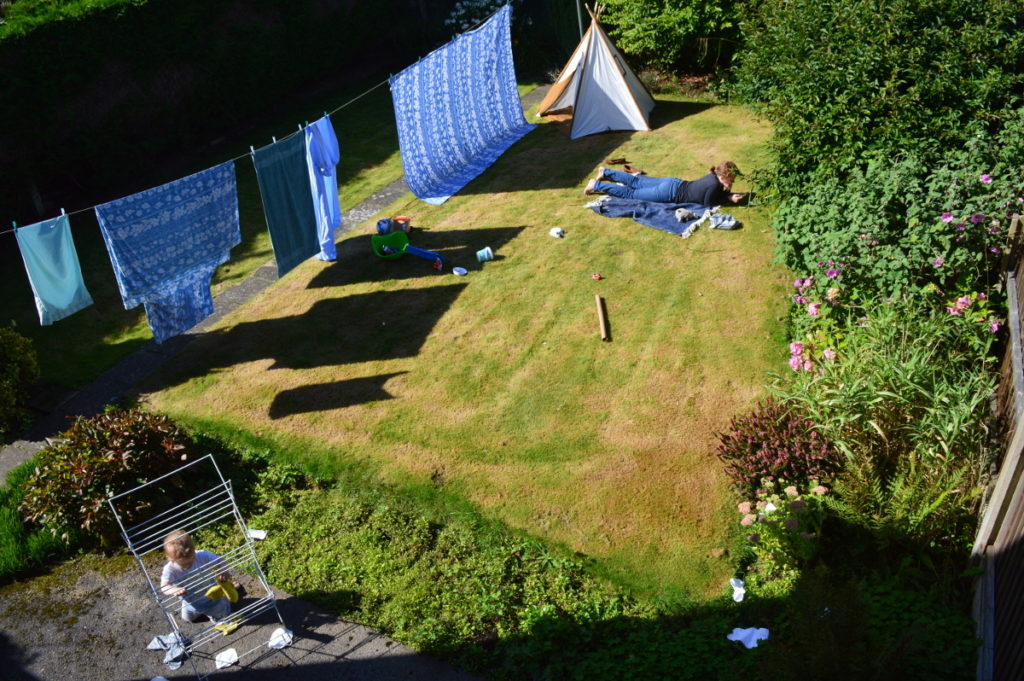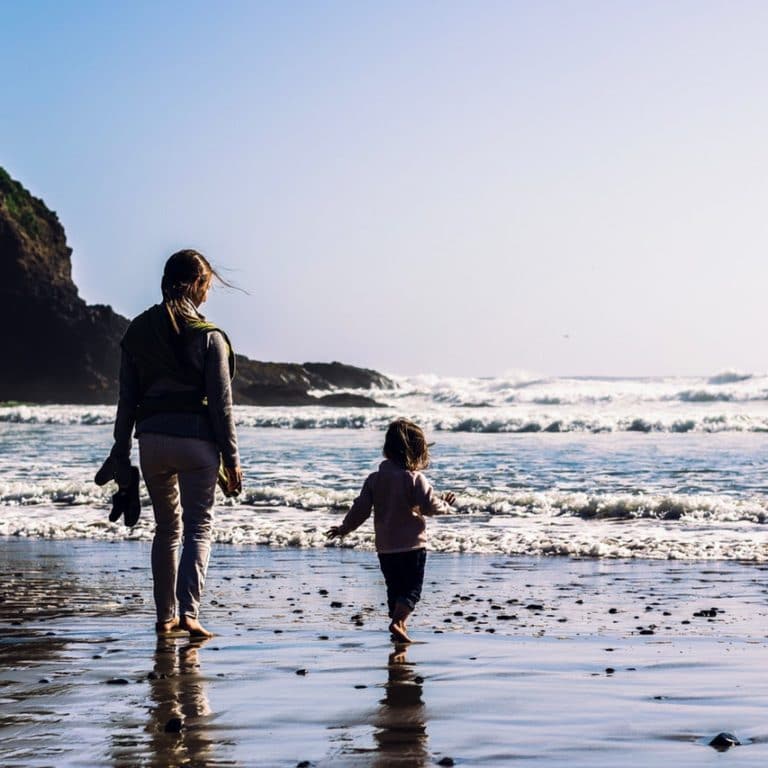Creating an Ideal Outdoor Play Space for your Preschooler
As I mentioned last week, we’ve moved house recently. The backyard in our former home was mostly a brick patio, with a patch of grass roughly the size of a postage stamp. Our new garden isn’t enormous (especially by American standards). However, there is plenty of room for the boys to run, play, and enjoy themselves. The yard is fenced in and I can leave them outside when I need to and know they won’t get into too much mischief.
Until they discover the grow bag full of potting soil. Then they will wash their hair with it and they will need baths. I don’t mind this kind of mischief, though. It makes me feel like I’m a good mom.
Right now, the yard is mostly grass with flower beds around the perimeter. It’s nice, but because the backyard is going to be a major player in our boys’ home preschool, it needs some work. For the early years, I believe that the setting we provide for our kids is one of the most important things we can think about. Kids need spaces, indoors and out, that lend themselves to open-ended, creative, immersive play. These spaces need to support the development of the whole child, not just literacy and numeracy skills.
Honestly, this feels like a tall order. How do you start creating a space like this for your kids?

Academic Approved Outdoor Play Spaces
Fortunately, there are a lot of smart people who have worked with young children for a very long time who share their knowledge with others. A while back, I reviewed Helen Bilton’s Outdoor Learning in the Early Years (2010). In it, she helpfully shares her suggestions for what to include in outdoor play spaces.
- Imaginative play. For Bilton, this would be an area set up by carers as a starting point for the children. She gives the example of a supermarket delivery service, with trucks, boxes, cones, tables, and containers, all available for the kids. It’s simply set up for the kids to engage with when, if, and how they please.
- Construction and building play. This includes a plot to dig in with tools and maybe blocks or planks.
- Gross motor play. Kids need enough empty space to run around without interfering too much with other kids’ play. Bilton also suggests providing a-frames, planks, crates, and other objects that can be stacked, climbed, and jumped off of.
- Fine motor play. Smaller objects to manipulate. Bilton includes bats, balls, hoops and ropes in her suggestions.
- Horticulture. Kids should have gardening tools and a space to grow plants.
- Quiet area: This could include seating, shade, books, games. I’ve seen others suggest that kids should have a place where they can play out of sight from adults – this would be an ideal spot.
- Environmental/Scientific discovery: A spot to attract creepy-crawlies, and equipment like magnifying glasses for looking at nature up close.
What I love about Bilton’s suggestions are that they take a very broad view of a child’s learning and development. Preschoolers are developing gross and fine motor skills, practicing problem solving, and thinking creatively. They should be in touch with the natural world and enabled to explore it. They need space to run, and spots to hide. Literacy and numeracy will weave themselves naturally into any of these play areas. We, as parents, simply need to set the stage.

Toys, Materials, and Using the Space
When it comes to picking out toys and fort building kit, one thing that we don’t need is a lot of ‘fixed’ equipment. We don’t necessarily need a jungle gym or a climbing frame. Kids can still climb, but we can provide them with crates and planks which they build into contraptions to climb on. Once a climbing frame is mastered, it is mastered. Loose parts, however, offer endless permutations of towers, bridges, and fresh challenges.
Providing loose parts also gives kids control over their own space. They can move things around, design the area in a way that suits their play. This authority is powerful, and really gives kids ownership of their play.
It’s also easy to get the impression from Bilton’s list that we should divide our backyards into seven discrete areas, and expect our kids’ play to fit neatly within them. This would actually inhibit play. (Not to mention it would be a lot of effort for the parent to enforce!) Instead, we need to plan for kids to be using toys and materials across many parts of their play space. You would expect to see kids using fine motor skills in the construction area, for example. It follows that some of the toys and materials that you provide for fine motor play would end up there at some point. Something I’ll be considering as we design our play space is how the areas flow together to encourage play.
Getting Started: Now
Having a space for the boys to play outside safely is a blessing and a huge opportunity. I’m determined to make the most of it. While Bilton’s suggestions are for nurseries and childcare centers. I think they can be easily adapted to my own back yard. And according to Teacher Tom, it probably isn’t that expensive!
The best part is – I’ve already started transforming our yard into a place for great play to happen. It’s been as simple as looking around our home for ‘loose parts’ to take outside for the boys. So far, cardboard boxes and old tablecloths have been a hit, along with bamboo rods from our garden. Scoops, shovels, and buckets for digging in dirt are winners as well.
Of course, this isn’t quite the thought out and intentional space I hope to create over the next year. And there certainly are some challenges that we will need to consider, like tracking dirt and mud into the house. But, I will certainly post more on this topic as we start to make changes!







